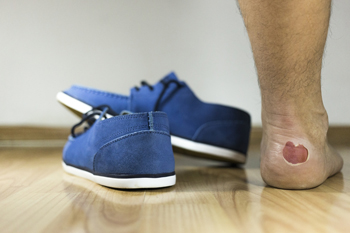Why Do Blisters Form and How Should They Be Treated?
Monday, 04 November 2019 00:00 Blisters, small fluid-filled pockets, are a common annoyance most people experience throughout their lives. However, blisters can be particularly painful when formed on the foot due to its many nerves and blood vessels. Continuous friction and pressure may cause blisters, so it is advisable to refrain from wearing shoes or socks that have a tighter fit, and to avoid humid or damp environments. Extreme heat or burns may cause blisters as well as the opposite, such as frostbite. Another factor affecting the occurrence of blisters is contact dermatitis, or skin inflammation formed by irritants and allergies. Certain medical conditions may also influence the risk of blisters on the feet like chicken pox or eczema. Treatments for blisters may include: applying an ice pack wrapped in a thick towel, using blister bandages, raising the foot to reduce inflammation, keeping the area dry, and applying topical ointments to the blister and the surrounding skin. If a blister becomes discolored, extremely inflamed, or does not heal after a few days, it is advised you speak with a podiatrist to discuss the proper treatment.
Blisters, small fluid-filled pockets, are a common annoyance most people experience throughout their lives. However, blisters can be particularly painful when formed on the foot due to its many nerves and blood vessels. Continuous friction and pressure may cause blisters, so it is advisable to refrain from wearing shoes or socks that have a tighter fit, and to avoid humid or damp environments. Extreme heat or burns may cause blisters as well as the opposite, such as frostbite. Another factor affecting the occurrence of blisters is contact dermatitis, or skin inflammation formed by irritants and allergies. Certain medical conditions may also influence the risk of blisters on the feet like chicken pox or eczema. Treatments for blisters may include: applying an ice pack wrapped in a thick towel, using blister bandages, raising the foot to reduce inflammation, keeping the area dry, and applying topical ointments to the blister and the surrounding skin. If a blister becomes discolored, extremely inflamed, or does not heal after a few days, it is advised you speak with a podiatrist to discuss the proper treatment.
Blisters are prone to making everyday activities extremely uncomfortable. If your feet are hurting, contact one of our podiatrists of Accent Podiatry Associates. Our doctors can provide the care you need to keep you pain-free and on your feet.
Foot Blisters
Foot blisters develop as a result of constantly wearing tight or ill-fitting footwear. This happens due to the constant rubbing from the shoe, which can often lead to pain.
What Are Foot Blisters?
A foot blister is a small fluid-filled pocket that forms on the upper-most layer of the skin. Blisters are filled with clear fluid and can lead to blood drainage or pus if the area becomes infected.
How Do Blisters Form?
Blisters on the feet are often the result of constant friction of skin and material, usually by shoe rubbing. Walking in sandals, boots, or shoes that don’t fit properly for long periods of time can result in a blister. Having consistent foot moisture and humidity can easily lead to blister formation.
Prevention & Treatment
It is important to properly care for the affected area in order to prevent infection and ease the pain. Do not lance the blister and use a Band-Aid to provide pain relief. Also, be sure to keep your feet dry and wear proper fitting shoes. If you see blood or pus in a blister, seek assistance from a podiatrist.
If you have any questions, please feel free to contact our offices located in Arlington and Mansfield, TX . We offer the newest diagnostic and treatment technologies for all your foot care needs.
Read more about Blisters on the FeetBlog Archives
- December 2024
- November 2024
- October 2024
- September 2024
- August 2024
- July 2024
- June 2024
- May 2024
- April 2024
- March 2024
- February 2024
- January 2024
- December 2023
- November 2023
- October 2023
- September 2023
- August 2023
- July 2023
- June 2023
- May 2023
- April 2023
- March 2023
- February 2023
- January 2023
- December 2022
- November 2022
- October 2022
- September 2022
- August 2022
- July 2022
- June 2022
- May 2022
- April 2022
- March 2022
- February 2022
- January 2022
- December 2021
- November 2021
- October 2021
- September 2021
- August 2021
- July 2021
- June 2021
- May 2021
- April 2021
- March 2021
- February 2021
- January 2021
- December 2020
- November 2020
- October 2020
- September 2020
- August 2020
- July 2020
- June 2020
- May 2020
- April 2020
- March 2020
- February 2020
- January 2020
- December 2019
- November 2019
- October 2019
- September 2019
- August 2019
- July 2019
- June 2019
- May 2019
- April 2019
- March 2019
- February 2019
- January 2019




